
30. 10. 1920 -
7. 2. 2016


|
«
Alexandre
Dumas
in
petticoats
»
!
On
the
literary
level,
«
she
is
of
the
same
caliber
as
Alexander
Dumas
and
Victor
Hugo
»
(Alain
Decaux:
famous
French historian).
|
|
With
Juliette
Benzoni’s
death in
2016,
it is even
more
important to
maintain
her
legacy.
Linda,
Webmaster
2016
|

|
M E
M O R I E S... |
|
During one of our visits,
Juliette Benzoni smiled and
asked if we had entered her
large bed-room, which served also as
her office. We had answered no,
we would not have allowed
ourselves to enter her room
without permission... Her
answer? But of course you can
enter and look around where I
work and write my books....
Today we entered it again, but
with a melancholy heart... the
typewriter is waiting for its
owner, a drawer is still open, a
notebook on the table... on the
left side a book about the
history of the Duchess of
Berry... the room is almost
uncanny silent.. what if the
typewriter could speak?...
silently, we tiptoe out of the
beautiful room... and leave the
orphaned typewriter in
grieving...Saint-Mandé 11. 2.
2016
|
|

|
With deep
regret
I inform you that
our
dearest
Juliette,
our
beloved
author,
passed away
on February 7, 2016 in
Saint-Mandé
.
She died
quietly
in her sleep,
her
dear daughter
Anne
at the bedside!
She was
in her 96th
year
and
for over 50
years
has
taught us so
much
about 'History',
entertaining
us
with her
attractive and resplendent
characters,
with whom
we loved and suffered!
She leaves
us
86
gems
to read and
re-read
with
as much
pleasure like the very first time.
For more information about that, see my Press pages
→
here
For me she was more than my preferred Author, - she had my friend
Frédérique (webmaster of the official French Juliette Website)
taken into her heart, and called us
«
mes filles des grands chemins
» (in line with Catherine, des Grands Chemins).
I am going to miss her more than I can express in words...
Juliette was an
incomparable
Author and
her
historical
Novels were
absolutely
accurate.
Every tiny
detail and
character
was
thoroughly
studied. Her
heroines credible and
adorable and
the historic
characters
come
alive and
are not
anymore a
name in a
History book
...
All my
thoughts are with 'Anne' her daughter.
I like to share with you some of the touching words Vincent Meylan Journalist,
Author
and expert of Jewels,
close friend of Juliette wrote to me on the 'Catherine, il suffit d'un
amour Facebook' page on 8th February 2016:
Dear Linda,
So many of us feel the loss of Juliette tonight. I know this is
something very personal to say, but maybe it will help you a bit. I have
decided a long time ago that I would never accept that someone is dead.
I just live with it. I do not think people are ever dead. I keep dead
people, which I love with me, always - this is quite easy to do in
Juliette’s case. Yesterday evening I started reading again Catherine and
I so love it. I am so thankful to Juliette for having written such
amazing books, which always take me to a place I enjoy so much. Juliette
is not gone. You just have to open one of her books to be close to her.
Try it...
Je vous embrasse amicalement and do not forget to read a few pages of
one of Juliette's book tonight. Vincent |
|
Juliette
Benzoni
by
Juliette
Benzoni
Autobiograpy
I
shall
soon
translate
the
text
into
English
!
Linda |
J’ai failli
naître sous
la Tour
Eiffel, ma
mère ayant
tout juste
eu le temps
avant
l’événement
de quitter
le
Champ-de-Mars
pour
regagner
l’avenue de
la
Bourdonnais
où mes
parents
habitaient
alors, mais
c’est à St
Germain des
Prés que
s’est passée
toute mon
enfance,
dans la
maison où
vécurent
Mérimée,
Corot et
Ampère, en
face de
celle où
mourut Oscar
Wilde.
Le
Fantôme de
Canterville
et la Vénus
d’Ille sont
pour moi des
amis de
jeunesse,
mais j’ai
toujours
préféré les
énormes
chahuts des
étudiants
des
Beaux-arts
qui
envahissaient
la rue en
moyenne une
fois par
jour.
Nos voisins
s’appelaient
Dunoyer de
Segonzac,
Louis
Jouvet, le
maréchal
Lyautey, la
marquise de
Lafayette et
les Duncan,
une
étonnante
tribu hippie
avant la
lettre qui
adoptait les
modes Peaux
Rouges dans
l’espoir de
retrouver la
pureté
grecque.
Quant à ma
famille,
elle se
composait
normalement
de mon père,
un
industriel,
ma mère,
bridgeuse
acharnée, ma
jeune sœur,
sans
qualification
précise, et
mon
grand-père,
redoutable
septuagénaire
à la
moustache
fleurant la
pipe et le
cognac.
C’était un
vieux
mécréant
nourri au
lait de
Jaurès et
qui avait,
dans ses
jeunes
années, humé
avec délices
la poudre
des canons
de la
Commune.
A cause de
cela, il
était plutôt
mal vu dans
la famille,
et, aussi,
parce qu’il
entretenait
sournoisement
une «
créature ».
Laquelle
gourgandine
avait
d’ailleurs
le mauvais
goût de se
prénommer «
Juliette » !
Le souvenir
que je garde
de mon
grand-père
est un
souvenir de
chapeau
melon. Il ne
le quittait
pratiquement
jamais et je
crois bien
qu’on l’a
enterré
avec.
J’avais
aussi une
grand-mère
maternelle,
habituellement
cantonnée à
Reims, cité
royale d’où
elle sortait
le moins
possible.
Elle n’en
sortit même
plus du tout
et renonça
finalement à
toute visite
dans la
capitale car
un matin de
juin, se
rendant à la
messe de 6
heures à St
Germain des
Prés, elle
rencontra,
rue
Bonaparte,
un individu
peint en
vert,
chaudement
vêtu d’une
timbale
attachée à
la taille
par une
ficelle et
d’une paire
de paillons
à champagne
en guise de
pantoufles,
rentrant
tant bien
que mal du
bal des
Quat-z
’Arts, point
culminant
des études
aux Beaux
Arts et
grande
soirée
artistique,
annuelle et
très
déshabillée,
des futurs
peintres,
sculpteurs
et
architectes
français. Ma
grand-mère
avait alors
bouclé sa
valise et
disparu
définitivement
de l’horizon
parisien.
Le choix de
mes
établissements,
scolaires
marqua, chez
mes parents,
une double
et
contradictoire
tendance à
un snobisme
invétéré uni
à une
tentative de
démocratie
parfaitement
hypocrite.
On me mit
d’abord au «
cours »
élégant des
demoiselles
Désir,
institut des
plus collet
monté,
malgré son
patronyme
surprenant,
et fréquenté
par les
jeunes sœurs
de la
comtesse de
Paris.
Malheureusement,
le cour
nommé Désir
ne me
réussit pas.
Habituée à
dévorer tout
ce qui me
tombait sous
la main dans
la
bibliothèque
familiale,
j’avais lu,
à neuf ans,
Notre-Dame
de Paris, et
m’en étais
vantée en
toute
innocence.
Fût-ce à
cause des
gambades
d’Esméralda
ou des
machinations
libidineuses
de Claude
Frollo,
toujours
est-il que
l’événement
causa un
aussi gros
scandale que
si je
m’étais
déclarée
abonnée à la
Vie
Parisienne.
On me retira
donc de
cette
institution
pour
m’introduire
au lycée
Fénelon dans
des classes
bondées
comme le
métro à six
heures du
soir
(c’était le
début de
l’enseignement
gratuit).
J’y fis ce
que je pus,
c’est à dire
pas
grand-chose.
Fort
heureusement
, le
retentissant
procès en
Cour
d’Assise
d’une
ancienne
élève du
Lycée
(l’affaire
Violette
Nozière)
donna si
fort à
penser à ma
famille
qu’elle me
parachuta
toute
affaire
cessante
dans une
maison plus
calme et
tout de même
mieux
fréquentée,
l’aristocratique
collège d’Hulst,
rue de
Varennes, où
je devais
rester jusqu’à ce
que
baccalauréat
s’en suive.
J’y pris
l’horreur
des maths,
la passion
de
l’Histoire
et des
Lettres, le
goût de
l’amitié et
un léger
penchant
pour la
politique
grâce
auquel, dans
les années
1936-1937,
je me
retrouvais
plusieurs
fois au
commissariat
de police du
quartier
pour
lacération
d’affiches
sur la voie
publique.
De là, je
passais à
l’institut
catholique
où
j’entamais
nonchalamment
une licence.
La guerre
vint mettre
un terme à
ma Dolce
Vita
personnelle.
Mon père en
mourut.
Quant à moi,
après un
passage
météorique
comme
auxiliaire à
la
Préfecture
de la Seine
où je fis
connaissance
de la
magnifique
bibliothèque
cachée sous
les toits de
l’hôtel de
ville, je me
retrouvais
mariée à un
médecin de
Dijon, le
docteur
Maurice
Gallois,
enfouie
jusqu’au cou
dans la
bonne
société
bourguignonne
et bientôt
mère de deux
enfants.
Tandis que
mon époux
partageait
son temps
entre ses
malades et
les
différents
maquis de la
région pour
effectuer
des missions
n’ayant avec
la médecine
que d’assez
lointains
rapports, je
passais des
heures dans
les
bibliothèques,
étudiant
l’histoire
de la
Bourgogne au
Moyen-âge.
C’est au
cours de ces
études que
je découvris
la légende
de l’Ordre
de la Toison
d’Or qui
devait, plus
tard, donner
naissance à
la série des
Catherine
Quelques
années après
la
libération,
je perdis
mon mari
disparu en
quelques
minutes
d’une crise
d’angine de
poitrine.
J’avais
trente ans
et il me
fallait
envisager de
travailler
si je
voulais
pouvoir
élever mes
enfants
comme je le
souhaitais
et conserver
un certain
niveau de
vie. Mais
dans une
ville de
province,
passer du
statut de
femme dite «
du monde » à
celui de
travailleur
salarié est
un exploit
difficile et
plutôt mal
vu. Mon mari
avait de la
famille au
Maroc. Je
m’y rendis
et entrais à
la rédaction
publicitaire
d’un poste
de radio :
Radio-Internationale.
Ce n’est pas
une
situation
extraordinaire.
Le Maroc,
d’ailleurs,
vivait les
derniers
jours du
protectorat
et il était
difficile de
s’y créer
une
situation
stable. Mais
j’y fis la
connaissance
d’un
officier, le
Capitaine
Benzoni, et
l’épousais
quelques
semaines
avant son
départ pour
l’Indochine
où il devait
rejoindre, à
Hué, le 6ème
Régiment de
Spahis
Marocains.
Mais, à
cause de
l’incertitude
des
lendemains
marocains,
mon mari
souhaitait
me voir
demeurer à
Paris,
auprès de ma
famille,
tandis qu’il
s’éloignerait.
C’est alors
que je me
lançais dans
le
journalisme.
Depuis
toujours,
j’avais été
fascinée par
ce métier,
et, à quinze
ans, j’avais
émis le
désir de m’y
consacrer,
mais mon
père m’avait
découragée
alléguant
une foule de
prétextes
mais évitant
prudemment
le seul réel
: le
journalisme
était mal
porté chez
les jeunes
filles, à
une certaine
époque et
dans un
certain
milieu.
|
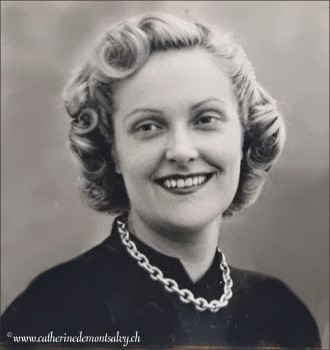
Juliette
Benzoni,
Paris
May
1953
photo
with
the
authorization
of
her
daughter
©Anne
Gallois |
Je
travaillais
simultanément
pour
l‘Histoire
nous tous,
pour le
Journal du
Dimanche,
qui était le
septième
jour de
France Soir,
et pour
Confidences
où
j’écrivais
de nombreux
articles
historiques
(je les
écris
toujours
d’ailleurs,
ce sont
d’ailleurs,
les
Confidences
de
l’Histoire)
j’y
ajoutais,
par le
suite, un
Courrier de
l’Histoire
qui me valut
de bons
moments et
d’autres
moins bons.
Qui dira
jamais la
grande
détresse de
l’historien
aux prises
avec une
meute avide
de connaître
ses
ancêtres.
Mon courrier
débordait,
et déborde
toujours, de
lettres de
ce type.
«
Je
m’appelle
Bidule mais
une vielle
tante m’a
dit que l’un
de mes
ancêtres qui
était noble
a supprimé
(ou vendu,
ou cédé ou
bazardé
n’importe
comment…) la
particule et
le titre à
la
révolution.
Pouvez-vous
m’aider à
les
retrouver?…
»
Ah cette
révolution,
avec ses
émigrés, ses
cachettes,
sa
clandestinité !
Elle est le
grand
recours
d’une foule
de
républicains
bon
teint auxquels elle
permet de
rêver qu’ils
ont eu des
ancêtres «
nés » dans
les talons
rouges
foulaient
hardiment
les parquets
de
Versailles.
Quant à moi,
je dois
faire face
quotidiennement
à la foule
assoiffée
d’honneurs
enfuis et de
châteaux
écroulés.
Pendant que
je faisais
mes
premières
armes dans
le
journalisme
de salon (je
fréquentais
beaucoup
d’artistes,
les
écrivains et
les vedettes
de cinéma)
et dans la
petite
Histoire,
celle de la
France
tournait mal
en
Extrême-Orient
et
l’Indochine
me rendait
mon mari en
fort mauvais
état mais
ayant tout
de même
échappé de
justesse au
piège de
Dieng-Bien-Phu.
Il fallut un
an pour lui
rendre la
santé, après
quoi il put
réintégrer
le Ministère
des Armées
comme
Ingénieur
d’armement.
En même
temps, il se
lançait dans
la politique
local au
service du
général de
Gaulle. Ce
n’était pas
une
nouveauté :
depuis qu’il
avait
rejoint, à
Londres, les
F.F.L puis
plus tard,
au Tchad, la
2e D.B. il
était un
fidèle du
Général.
Président de
nombreuses
sociétés, il
est
actuellement
maire
adjoint de
notre ville
de
Saint-Mandé.
Quant à moi,
une grande
émission
télévisée me
fit mieux
connaitre et
décida un
éditeur, le
mien, à me
donner un
roman
historique.
Ce fut : Il
suffit d’un
amour… le
premier de
la série
Catherine.
Depuis, je
n’ai pas
cessé d’en
écrire et
c’est je
pense, une
maladie qui
ne me
quittera pas
de si tôt.
Ce que
j’appellerais
« l’aventure
Catherine »
a commencé
d’un drôle
de façon. Je
sortais tout
juste des
projecteurs
de la
Télévision
Italienne et
je
commençais
mes séries
d’article
historique,
lorsque je
fus
convoquée,
un beau
matin, par
le
Secrétaire
Général de
l’Agence de
presse OPERA
MUNDI,
Gérard
Gauthier, au
siège social
de la dite
agence.
Introduite
dans
l’immense
salle de
conférences
qui avait
été jadis la
salle de bal
d’un hôtel
particulier
ducal, j’ai
été
confrontée
avec un
monsieur
jeune et
dynamique
qui après
les
compliments
d’usage, m’a
demandé si
je n’aurais
pas, dans un
coin, une
bonne idée
de roman
historique.
Me souvenant
de mes
lectures
bourguignonnes,
j’ai dit
qu’effectivement
j’avais ça
dans mes
fonds
de tiroir…
et j’ai vu
mon
interlocuteur
quitter
alors son
siège
et disparaître en
courant
comme s’il
était
poursuivi.
Pensant que
la séance
était
terminée,
j’allais, un
peu déçue,
prendre le
même chemin
plus
calmement
quand je
l’ai vu
revenir,
titubant
sous le
poids d’une
demi-douzaine
de
gigantesques
in-folio
noirs.
Derrière
lui, une
secrétaire
essoufflée
en
véhiculait
trois
autres. Le
tout
a atterri tant
bien que mal
sur une
grande
table.
- Vous
voyez ça?
m’a dit
Gérald
Gauthier
dans un
grand geste
dramatique,
ce sont les
«
press-books
»
d’Angélique.
Je vous en
promets
autant, même
gloire et
même succès.
Et
maintenant
au travail !
En rentrant
chez moi, je
n’étais pas
tellement
convaincue.
Je pensais
que ce
Gauthier-là
avait dû
voir le jour
quelque part
du côté de
Marseille et
que j’avais
certainement
bien moins
de chances
qu’il ne le
prétendait
d’atteindre
à la gloire
internationale.
Néanmoins,
comme
j’avais
envie
d’écrire
cette
histoire, je
visais la
chose avec
une
attention
féroce. Je
devais lui
soumettre ma
« ponte »
tous les
deux jours
et il ne
laissait
même pas
passer une
virgule mal
placée.
J’en étais à
peu près au
tiers du
roman et je
rêvais d’un
séjour au
bagne pour
me reposer
quand le dit
Gauthier me
téléphona.
Avec un
admirable
sang-froid,
il
m’annonça,
comme si
c’eût été la
chose du
monde la
plus
naturelle,
que France
Soir
achetait ce
roman encore
embryonnaire…
et que
j’avais deux
mois pour en
arriver au
mot « fin ».
J’ai eu
quelque
peine à
réaliser…
mais c’est
alors
seulement
que j’ai
compris ce
que
signifiait,
pour Gérald
Gauthier, le
mot «
travailler
». Je suis
sortie de
l’épreuve
exténuée,
vidée,
lessivée,
imbibée de
café jusqu’à
la moelle et
fumée comme
un jambon de
Bayonne à
force de
cigarettes.
Mais le
roman était
fini (les
deux
premiers
tomes tout
au moins),
France Soir
le lançait
et dix
éditeurs
étrangers
l’avaient
déjà acheté.
Nous avions
gagné la
partie.
Depuis, le
succès a été
grandissant.
Catherine
compte 5
tomes (et à
la demande
générale des
éditeurs,
j’en entame
le sixième).
Marianne en
compte trois
et le
quatrième
est en
route, les
éditeurs se
montent
presque aux
deux
douzaines et
les lecteurs
se comptent
par
millions.
Personnellement,
je n’arrive
pas à
comprendre
comment la
vie d’une
bourgeoise
de Paris du
XVème siècle
peut
passionner
au même
degré qu’une
fermière du
Wyoming, un
Turc de
Cappadoce,
un pêcheur
islandais,
des foules
moldo-valaques,
serbo-croates,
slovènes ou
israéliennes
au même
titre que
plusieurs
millions de
français,
mais le fait
est qu’elle
les
passionne et
qu’ils en
redemandent.
Quant à moi,
je commence
seulement à
comprendre
que j’ai
atteint
le succès et
que les
prédictions
farfelues de
l’homme aux
in-folio
noirs
n’étaient
pas des
galéjades.
Ma vie
présente n’a
rien de
tumultueux,
je suis une
femme
paisible,
mais je
cultive
toujours la
double
passion du
passé et des
voyages qui,
l’un
poussant
l’autre, me
font faire
des
centaines et
même des
milliers de
kilomètres,
afin de
visiter les
ruines d’un
château ou
de fouiller
les archives
d’une
préfecture.
Je crois aux
fantômes et
je crois
aussi que
les vieilles
pierres
conservent
quelques
émanations
des âmes qui
les ont
habitées.
Ainsi, il ne
m’est pas
possible de
construire
un livre, ni
d’en rendre
l’atmosphère
si je n’ai
respiré
l’air des
différents
sites de
l’action,
observé le
paysage, le
visage des
habitants et
les couleurs
du ciel.
Je voyage
donc
beaucoup,
mais, le
reste du
temps, je
vis dans une
charmante
vieille
maison
Napoléon
III, l’un
des derniers
petits
hôtels
particuliers
de cette
époque
s’élevant
encore dans
la
périphérie
immédiate de
Paris. J’y
cultive des
roses et j’y
vis
tranquillement
au milieu de
livres
innombrables
et d’une
famille qui
me tient à
cœur. Je
fais de la
peinture, de
la
tapisserie,
de la
cuis
ine
aussi, comme
toute
Française
qui se
respecte.
Mes grandes
réussites
sont la
poule au
pot, chère
au roi Henri
IV, les
cailles aux
raisins, le
brochet au
beurre
blanc, le
gigot au
fromage, les
quenelles de
saumon… et
le beefsteak
aux frites !
Quant à mes
vacances, je
les passe en
Corse, pays
d’origine de
mon mari, à
faire du
bateau, de
la natation
et à
bouquiner
éperdument
au soleil
les romans
policiers
que je n’ai
pas eu le
temps de
lire en
hiver… En
fait, je
suis une
femme sans
histoire qui
a
définitivement
choisi celle
des autres !
→
the above
Autobiography
written by
the Author
can be found
in certain Editions
of the
French
Belle
Catherine
and
Marianne : Jason des
quatre mers
Editions.
Webmaster
Linda
|
 |
|
Portrait
of
Juliette
Benzoni
- by
Webmaster |
Personal
life...
Juliette
Benzoni was
born
Andrée-Marguerite-Juliette
Mangin
on 30
October 1920
in 'Paris',
France. Her father,
'Charles-Hubert Mangin', was
an
industrialist
of Lorraine origin and
her mother,
'Marie-Susanne
Arnold', was from
the 'Champagne'
with
Alsatian and
Swiss
origins. She
spent her
childhood in
the district Saint-Germain-des-Près.
When she was
15, her
parents
moved to
Saint-Mandé
where she
would live
until her
death in
2016.
On the
photo above,
we can see
Juliette
when she was
about three
years old.
It was taken
at Reims at
the home of
her
grandmother.
On the
bottom of
the photo,
we see the
writing of
Juliette
concerning that
photo. This
image has
been shared
with us by
'Anne Gallois', her
daughter.
Thanks so
much for
your
generosity
très chère
Anne.
|
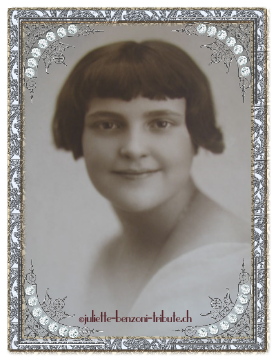
Juliette
Benzoni
(aged
11)
|
She studied
at
the Hulst
College,
then at the
Catholique
Institut
of Paris,
Philosophy,
Law and
Literature.
She married
1941 a
doctor from
Dijon
Maurice
Gallois,and was soon
mother of
two children.
|
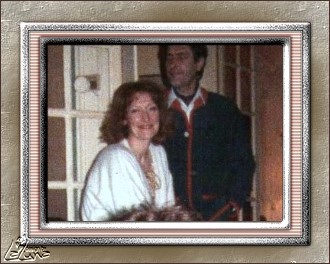
Anne and her Brother Jean- François in 1985
|
During that
period of
her life,
she spent
many hours
in
libraries,
studying the
history of
'Burgundy' in
Medieval
times. One
day she came
across the
legend of
the
Order of the
Golden
Fleece,
which would
years later
inspire her
for the
Catherine
Novels.
After the
liberation
of France,
she lost
1950 her
husband who
had suffered
a
heart-attack
- and
decided to
go to
Morocco, to
visit her
deceased
husband's
relatives.
While in Morocco, Juliette
joined the editorial staff at a radio station called Radio-International.
There she she met
her future
husband, a
young French
Officer from
Corsica, Count André Benzoni di Conza and they
married in 1953.
|
|
|
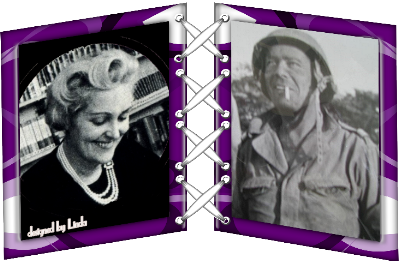
Juliette and her late husband
André Benzoni, Count of Conza |
|
|
Career...
After her return to
Paris,
France, she launched into journalism, writing for
several Magazines, Histoire pous tous, Journal du Dimanche,
France-soir and Confidences a number of historical articles. As
a journalist she interviewed celebrities like
'Jean Cocteau', 'Erich von Stroheim', 'Maurice Chevalier', 'Jean Marais' and
many more'...
under her pseudonym 'Juliette Jansen'.
In 1959
Gérald Gauthier, director of the Press Agency at 'Opéra Mundi' had seen her in
Le Gros Lot (Quiz TV Show), and been impressed by her historical
knowledge about the 'Italian Renaissance'. Gauthier asked her if she were able to
write a
historical fiction series in the style of
'Anne Golon's'
Angélique. Juliette remembered her time in
'Burgundy' and her fascination for the Order of the Golden Fleece and started to write
Catherine (original French title:
Il suffit d'un amour). The first book in
1963, was
immediately a huge success and already ten foreign publishers
bought the Rights to translate the Novel, though the story had only been
published at first as a Cliffhanger in the daily newspaper France Soir.
Her first bestseller Catherine, One Love is enough, would later be translated into more than twenty
languages!
Even the author herself could not understand what fascinated millions of readers,
about the life of a young Bourgeoise from the fifteenth century. But Juliette had touched the hearts of her readers, the way she combined historical facts
with the life of her heroine in bygone times. The secret of her success? Her
ingenious way of writing, the leak-proof historical facts and also the human
side of her fictive characters. The famous French historian
Alain Decaux member
of the Académie française, was a
great admirer of Juliette.
Extract from Alain Decaux's Foreword in :
Par le Fer
ou le Poison
It was enough for me to turn a button one evening to get to know you. It
is true that it was on television, where you were facing the formidable
questions of Pierre Sabbagh, and moreover triumphed with an ease that left me
amazed. It was about the 'Italian Renaissance', and no Frenchman or Frenchwoman in
the world, I am sure, showed so much science on this exciting but difficult
subject.
(...)
And then one day, you kindly sent me your first historical novel. It was about a
certain Catherine, very attractive, who plunged us into the 'Middle Ages'. Thanks
to you, I followed Catherine through some fiery adventures...
(...)
I know how you work, how you prepare. I know that you spent five years gathering
Catherine's documentation. That you have gone through more than three hundred
books, made up hundreds of files. Of course, you introduce fictional characters
into the story. But that is the perfectly legitimate privilege of the historical
Novelist. What the strictest historian must recognise is your desire to paint
the real characters as they were, and to make them evolve in a perfectly
authentic setting.,
The
Catherine Novels...
were to be at first a 'five book series' hence
the epilogue in the fifth book. That book was
published in France 1968, with the title
Catherine and a
time for love
(fr: Catherine, et le temps d'aimer).
In an
interview 1985 she said about Catherine:
« ...I
have a
weakness for
Catherine.
Because she was the
first of my
heroines,
and also because I invented her story, whereas Marianne, a star for Napoleon
was a request
to me by
my Publisher
'Editions Trévise' for
the
bicentenary
of Emperor
'Napoleon
Bonaparte'...»
|
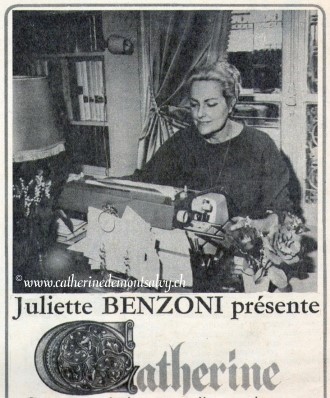 |
After her great success with
'Catherine', she continued to write. Her next series in 1969, was called
Marianne a Star for Napoleon
(fr:
Marianne, une étoile pour Napoléon), which took place during the Napoleonic
period. Her readers enjoyed also this new heroine and remained her loyal
readers.
During the
writing of
The Lure of
the Falcon
(fr: Le
Gerfaut),
they
asked if she
would write
two more «
Catherine
Novels »
due to the
fact of the
sensational
success. She
agreed and
in 1973,
five years
after
Catherine
and a time
for love,
a
Snare for
Catherine
(fr: Piège pour
Catherine)
was put on
the market.
Though her
readers had
to wait six
years until
the sequel
La Dame de
Montsalvy
was
published in
1979 ! This
was not
the
Romancière's
fault;
please see
what the
Author told
me on one of
my visits to
Saint-Mandé:
follow this
link
→
here
for all the
information.
Yet that is
nothing
compared to
what the
English
readers had
to wait.
because the
first
publisher 'Heinemann
Ltd' had not
translated
the seventh
adventure (and we shall
never know
why... !)
More than 43
years later,
the
seventh book
would
finally be
translated
into
English. The
THE LADY OF
MONTSALVY
was
published by
Telos
Publishing
in England
on 1 June
2021 to
the joy
of the
faithful
Catherine
readers all
over the
World...
Filmography:
In 1968
a
French,
German
Italian
co-production
adapted the
first two
Catherine
Novels for
Cinema with
the same
director
Bernard
Borderie,
who had
created the
Angélique
films (Anne Golon).
Unfortunately
the film was
a disaster.
As Juliette
told us in many
interviews,
her story
had been
totally
changed. The
film begun
with showing
nude girls
in a public bath in
Paris - and
her hero
Arnaud de
Montsalvy
revolutionized
in Paris
1413 ! When
she saw the
movie she
«
cried like
a waterfall
»
(in her own
words...)
and for her
the subject
FILM was
done...
I like to
add that it
was not the
lack of
money, but
like in many
cases: too
many cooks
spoil the
broth !
In 1983,
French
television
'Antenne 2'
adapted
Juliette's
second
bestseller,
Marianne, a
Star for
Napoleon
directed by
the
ingenious
Marion
Sarraut.
This time
Juliette
Benzoni was
more than
satisfied,
she had worked
hand in hand
with Marion Sarraut and
the
overwhelming
success
tells it's
on tale.
In 1986
Antenne 2 adapted also
the story of
Catherine
likewise
with 'Marion
Sarraut' as
director.
Juliette was
more than
happy that
finally her
true story
and that of
her
characters
made forget
that aweful
movie from
1968! The
success was
overwhelming
and until
this day
Claudine Ancelot who
was such an
adorable
Catherine,
and
Pierre-Marie
Escourrou,
as the
arrogant but
beloved hero
Arnaud de Montsalvy are unforgotten and remembered with great joy and
admiration
by all those
who were
able to
watch the
TV-series.
Alas, ony
the
telespactors
in 'France'
and years
later in
'Poland' were
able to see
that superb
adaptation.
On December
2007 the
Club
France
Loisirs
began
selling the
series on
DVD...
A Prince
called Aldo
Morosini...
Juliette
Benzoni
wrote
86 immensely
successful
books...!
This article
would not be
complete
without
mentioning
at least one
more great
success -
that of
the 15
Aldo
Morosini
adventures,
the Venetian
prince,
expert on
precious and
ancient
stones.
Please
follow the
link to the
Aldo
Morosini
extra pages
to learn
more about
Juliette's
favourite
male
character,
she would
have loved
to have as
her nephew
as she told
in an
interview...
more details
→
here...
Juliette's
last book
Le Vol du
Sancy - Des
Carats pour
Ava? Was
published
two weeks
before she
left us on
7
February,
2016. It was
the 15th
adventure of
Venetian
Prince Aldo
Morosini and
his gang,
|
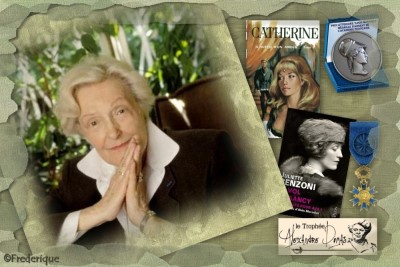
Covers
of
'Catherine'
and
'Vol
du Sancy'
with
images
of
her
Awards |
It had been
one of
Juliette
Benzoni's
wish that
her
Aldo
Morosini
Adventures
would also
be
translated
into 'English',
'German' and
for sure into
'Italian'! Is
not the hero
from 'Venice'?
But no
publisher
ever
approached
her !
Indeed a
great
mystery
when already
nine
Countries:
Hungary,
Portugal,
Spain,
Russia,
Slovakia,
Czech
Republic,
Greece,
Poland
and
Israel
had
translated
the story of
his
Highness, Prince Aldo
Morosini.
To
those who
are reading
here my
article and
are
interested, the
Aldo
Morosini
series
are not
only historical
fiction
but mystery
books in the
style of
Agatha
Christie's
- her hero Aldo can
be compared
with the
likes of
a
Simon
Templar - the
story takes
place
between 1918 -
1932. Our
hero travels
from his
home-town
Venice, to
Paris,
Vienna,
London,
Lisbon,
Warsaw,
Israel
and once
even as far
as the
United
States.
Some second
to none
characters
join him,
which made
the Author
call them
'Aldo's
gang'...
actually it
all had
started with
a request by
Jean Piat,
to write for
him a
four-part
television
series. Yet
the Producer
died just
before the
start of the
production -
and the
story was
shelved,
with the
excuse that
the hero
travels
too much,
that it
would cost a
lot of
money...
thinking
what
television
series cost
nowadays,
one can only
regret that
Aldo
Morosini
never made
it so far on
the
screen...
|


A
typewriter
now orphaned... |
Meeting
Juliette
Benzoni at
Saint-Mandé...
I had the
extraordinarily
honour to have
met Juliette
on many
memorable
visits at
her home in
Saint-Mandé.
It has
enriched my
life and
confirmed to
me one thing
« dreams can
come true »
we must only
believe in
them....! I
shall never
forget her
and will
always
cherish
those
moments I
was able to
spent in her
company. Her
'Catherine Novels' are
closest to
my heart, it
was through
them I
started to
love French
Literature
and their
History.
Now my
dearest
friend has
gone on... I
would love
only one
more time to
thank her
infinitely
for all the
memorable
hours she
has given me
while
reading her
outstanding
precious
books,
travelling
with her
characters
to many
places, I
would not
have known
without her
books. I
shall never
forget the
happy
moments at
her home
together
with her
daughter
Anne and my
friend
Frédérique.
Dear Juliette, I
miss you
very much,
but one day
we shall
meet again
and you will
tell me all
about the
secrets you
have learned
now about
some of the
historic
characters.
Who was
behind the
Iron Mask?
What
happened to
Queen
Marie-Antoinette's
little son
Louis, XVII
?
|
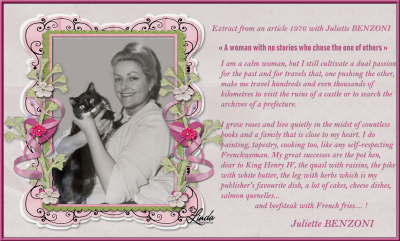 |
On a very
personal
note
Every time
we went to
see
Juliette,
it was like
entering an
enchanting
room in a
Château, where
a special
aura
prevailed
and a venerable
queen was
waiting for
us. As a
ritual,
without ever
talking to
each other
about this,
we returned
to
our seats on
the white
comfortable
settee. When
it was time
to leave and
say our au-revoir,
Juliette
used to
smile at us
and say:
«
When will
you girls
come back to
see me
again
»?
We answered
back in
unison,
smiling at
her while we
got up to
embrace her,
saying
"as soon as
possible
dear
Juliette..."!
Until then
my adorable
sweet
Lady of
Saint-Mandé,
I shall go
on reading
your books
everyday, if
only a few
pages.
With all my
love
Linda
|
* * *
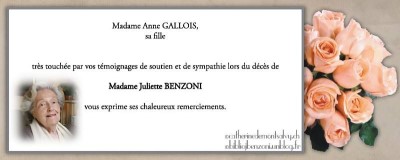

February 2016
A last farewell from
her girls
'Claudia, Frédérique, Héléne, Linda'
called by the Author : Les Filles des Grands Chemins
|

|
1988
Prix
Littéraire «
Louis
Barthou »
|
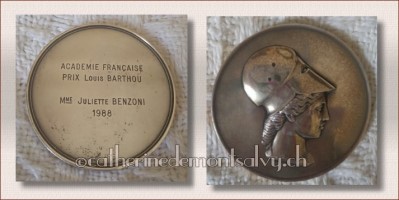
Silver Medal
by
the
Académie
Française
for
her Novel
Felicia
au soleil
couchant.
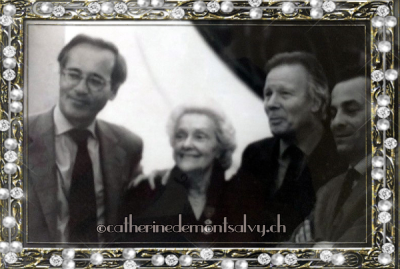
1998
Chevalier
of
the
National
Order
of
Merit
1974
Juliette
Benzoni,
Founder
of
the
Trophy
Alexandre
Dumas
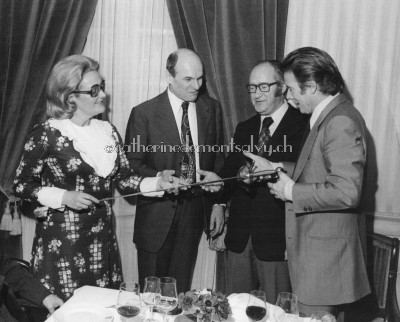
From
left
to
right:
Juliette,
François
Chaumette
Alain
Decaux
and
Jean
Piat
(Les
Rois
Maudits)
Do not miss to read in detail
the story behind the Trophy Alexander Dumas, created in 1974 by
Juliette Benzoni.
We see on the above photo the Author holding the
'Sword' modelled after that of 'Chevalier d'Artagnan' awarded to 'François Chaumette' for
his interpretation of ATHOS in the television Series 'd'Artagnan'. Alain Decaux
president of the 'Association friends of Alexandre Dumas', plus everyone's darling
Jean PIAT famous for his role in 'The cursed Kings', 'Lagardaire' and many more
fantastic roles. For more details see
here
Juliette was one my
'winners' of the
CDM Award 2010
I had created just for fun in 2008.
It was my way to say thank you, for her generosity to
share with her faithful readers, so many articles,
photos and anecdotes and for the joy she gave us,
writing outstanding books. My friend had been
deeply touched by this prize...
Linda,
webmaster
|
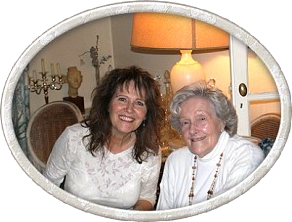
photo©lclaudia
compagnoni
Gibb
31
October
2009
the
day
I
met
my
adored
Author
Juliette
 

return
button
Top
|
I hereby confirm that most of these rare over 50
year old articles and photos you see on all pages of
this
website concerning
Juliette Benzoni, belonged to the
Author
- be that newspaper
articles or photos. She trusted me
with her material to do whatever I thought was best.
No infringement is intented.
All information and material on this site are not for
sale nor are services being paid for.
Linda
webmaster
|
© 2008 -
2025 catherinedemontsalvy.ch
non profit
site
All rights
reserved
|